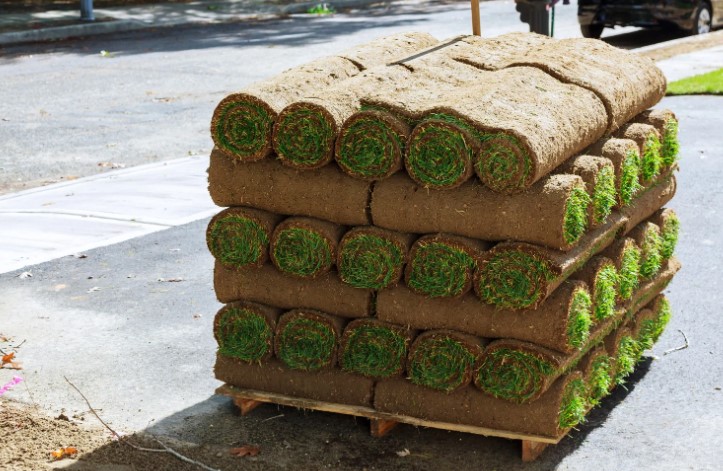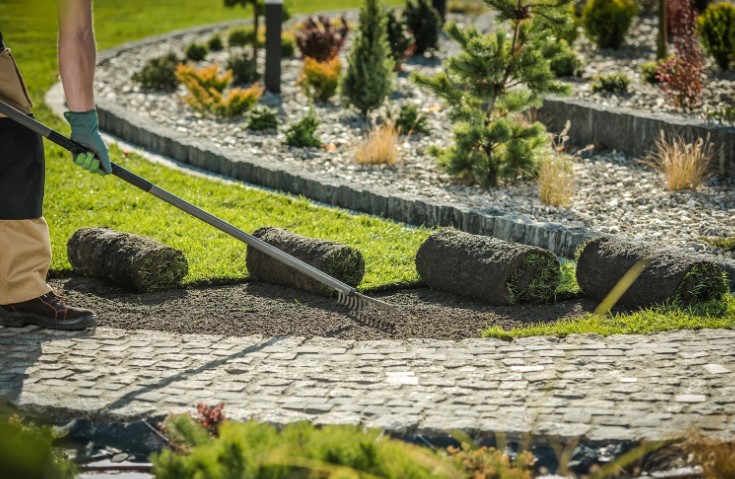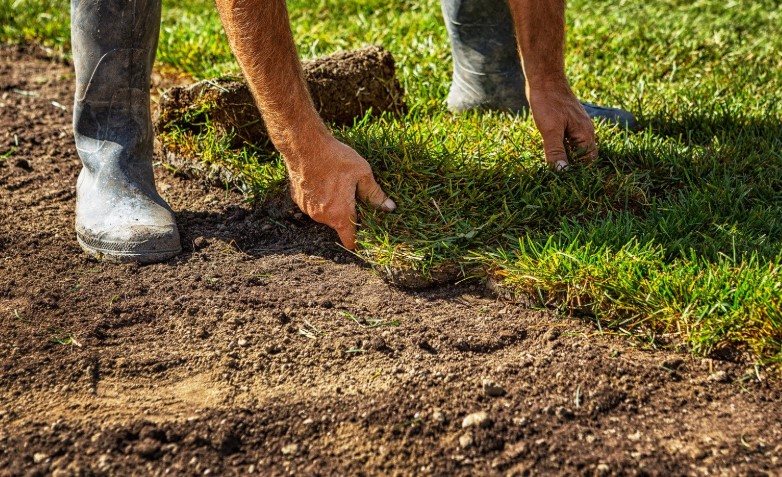Laying new turf is an exciting step towards achieving a lush, green lawn, but one of the most common concerns is how long does it take for the turf to root. The process of turf establishment is crucial because strong roots ensure a healthy, long-lasting lawn.
However, the time it takes for turf to root can vary depending on several factors, including soil preparation, watering routine, weather conditions, and the type of turf used.
In this guide, I will explain how long does turf take to root, what affects the rooting time, and how to speed up the process. I will also provide tips on checking if the turf has rooted properly and troubleshooting common issues.
How Long Does Turf Take to Root?
Understanding the Turf Rooting Process
Turf establishes itself in two main stages:
- Shallow Rooting (Days 1-10): In the first few days after laying, the turf begins developing shallow roots that help it absorb water and nutrients. During this stage, the turf is delicate and requires careful maintenance.
- Deep Rooting (Weeks 3-6): After the initial stage, the roots start growing deeper into the soil, anchoring the turf securely. By the end of six weeks, a properly maintained lawn should be well-established and resilient.
The exact time for turf to root depends on the environment and how well it is cared for during the initial weeks.

What are the Factors That Affect Turf Rooting Time?
Several factors influence how quickly turf establishes its roots:
- Soil Quality: Well-prepared soil with good drainage and aeration promotes faster rooting. Compacted or poor-quality soil can slow down the process.
- Weather Conditions: Warm temperatures and moderate rainfall create the best conditions for turf growth. Extreme heat, drought, or frost can delay rooting.
- Turf Type: Different grass varieties have varying rooting times. Some species establish quickly, while others take longer to develop strong roots.
- Watering Routine: Consistent and correct watering encourages deep root growth, while overwatering or underwatering can hinder the process.
- Foot Traffic: Walking on newly laid turf too soon can disturb the roots and slow their development.
How to Help Turf Root Faster?
How to Prepare the Soil for Quick Rooting?
Proper soil preparation is essential for fast and healthy root development. Before laying the turf, I ensure the soil is:
- Loosened and aerated to allow roots to penetrate easily.
- Leveled and free of debris for even growth.
- Enriched with organic matter or topsoil to provide essential nutrients.
A well-prepared base gives the turf the best possible start.
What are the Watering Schedule for New Turf?
Watering is critical for turf establishment, but it must be done correctly. Here’s the ideal schedule:
| Time After Laying Turf | Watering Frequency |
| Days 1-7 | Twice daily |
| Days 8-14 | Once daily |
| Weeks 3-4 | Every 2-3 days |
| Weeks 5+ | Once per week |
Signs of overwatering include soggy soil and yellowing grass, while underwatering causes wilting and dry patches. Adjusting watering based on weather conditions is essential.

What are the Fertilising Tips for Stronger Roots?
Applying fertiliser at the right time helps turf develop a robust root system. I recommend:
- Using a phosphorus-rich fertiliser immediately after laying turf to encourage root growth.
- Applying a balanced fertiliser after four weeks to maintain healthy growth.
- Avoiding over-fertilisation, which can weaken the roots and burn the grass.
What are the Common Mistakes to Avoid That Slow Rooting?
To ensure the best results, I avoid these common turf-laying mistakes:
- Walking on the turf too soon – This can disrupt the roots and cause uneven growth.
- Watering too much or too little – Consistency is key for healthy establishment.
- Skipping soil preparation – Poor soil conditions lead to weak root development.
How to Check If Turf Has Rooted?
Simple Tests to Check Root Growth
Checking if turf has rooted properly is easy with these methods:
- The Tug Test: Gently lift a small section of turf. If it resists being pulled up, it has started rooting.
- Visual Inspection: Healthy turf should have new growth and a uniform green colour.
- Firmness Underfoot: Walking on the lawn should feel stable, not soft or spongy.
What to Do If Turf Is Not Rooting Properly?
If the turf is struggling to establish, I take the following steps:
- Check the soil moisture – Ensure the soil is damp but not waterlogged.
- Aerate compacted soil – Loosening the soil helps roots penetrate deeper.
- Apply a light top dressing – Adding a thin layer of nutrient-rich soil can support growth.

Conclusion
The time it takes for turf to root depends on several factors, but with the right preparation, watering, and care, it usually takes around three to six weeks to fully establish. Proper soil preparation, a consistent watering schedule, and avoiding common mistakes all contribute to a successful lawn.
By following these guidelines on how long does turf take to root, I ensure that new turf grows strong, healthy, and resilient, providing a lush green lawn for years to come.
Related Article: Best Time to Lay Turf UK: When Is the Perfect Month of the Year?
Frequently Asked Questions on How Long Does Turf Take to Root
1. Can you walk on turf before it has rooted?
No, walking on turf before it has rooted can disturb the soil and slow down the establishment process. It’s best to avoid foot traffic for at least two weeks.
2. How long before I can mow new turf?
I usually wait three to four weeks before mowing. The first cut should be light, with the mower blades set high to avoid damaging young roots.
3. Does laying turf in winter affect rooting time?
Yes, colder temperatures slow down root development. However, turf can still establish in winter if the ground isn’t frozen. It just takes longer compared to spring or summer.
4. Can I speed up turf rooting with special treatments?
Using a root-stimulating fertiliser and keeping a consistent watering schedule helps speed up the process. However, patience and proper care are necessary.


0 Comments